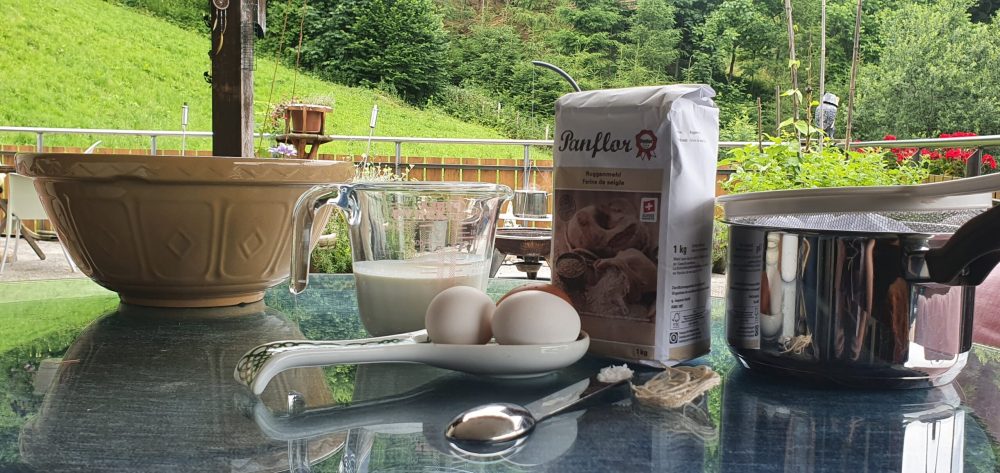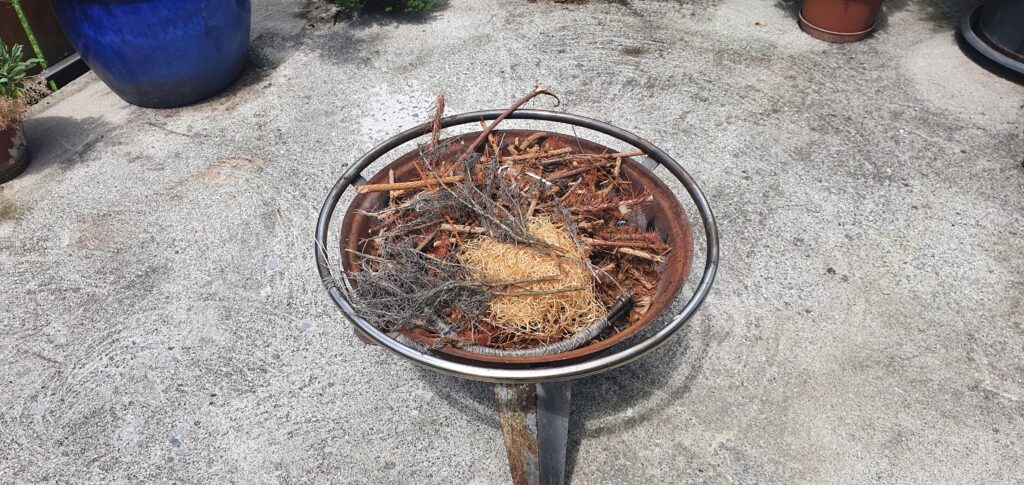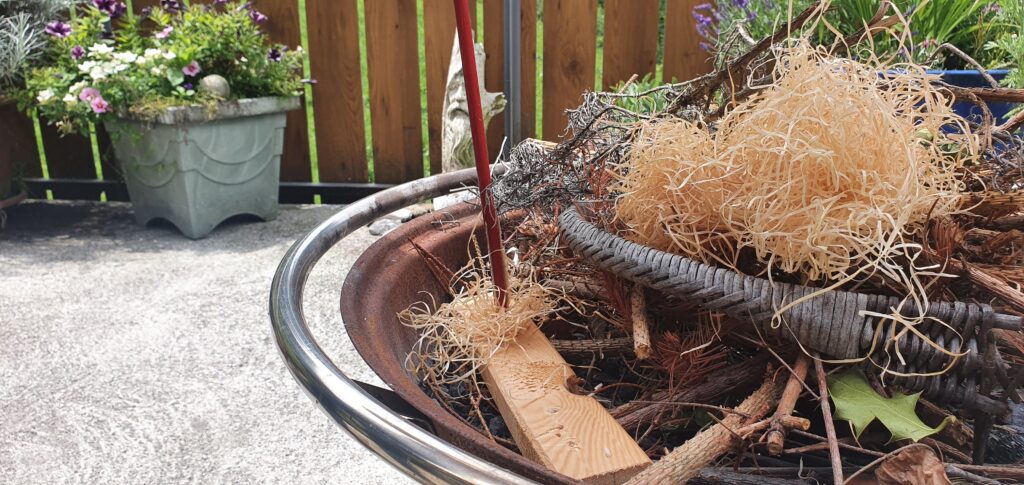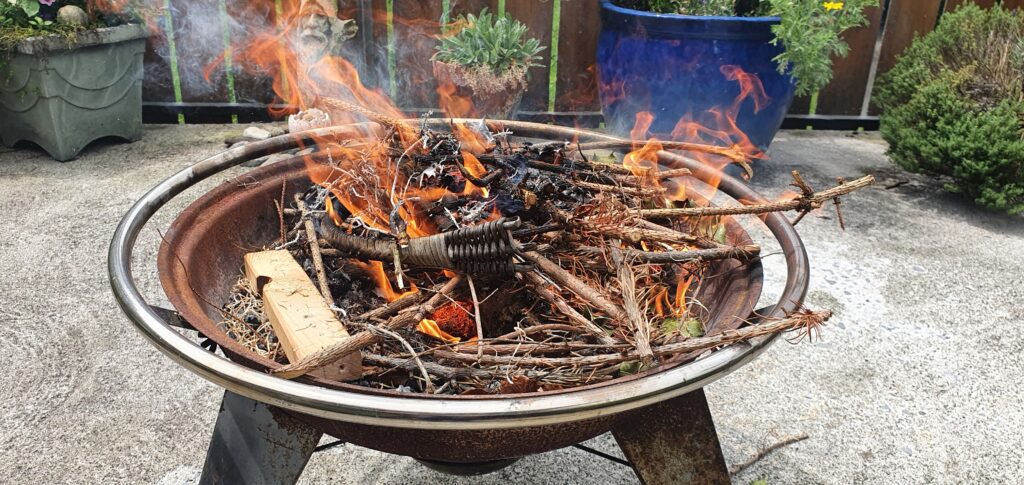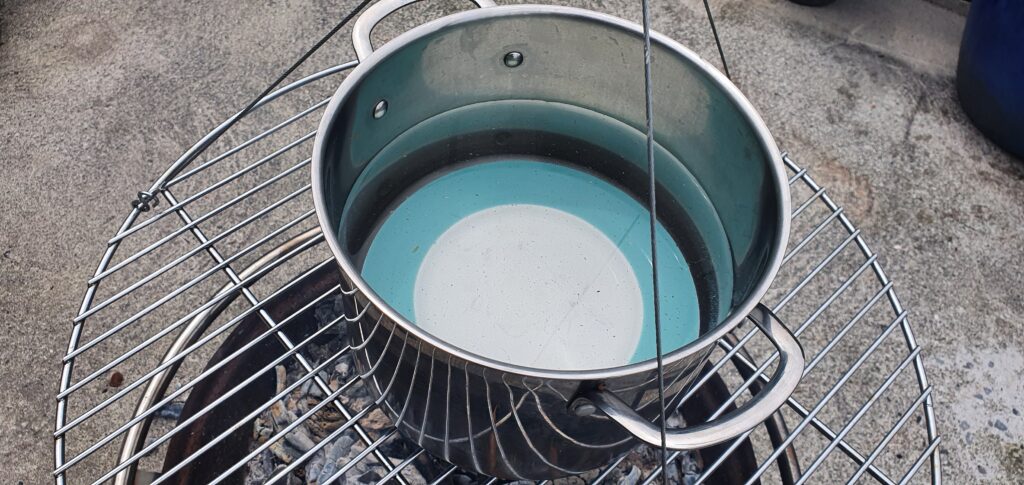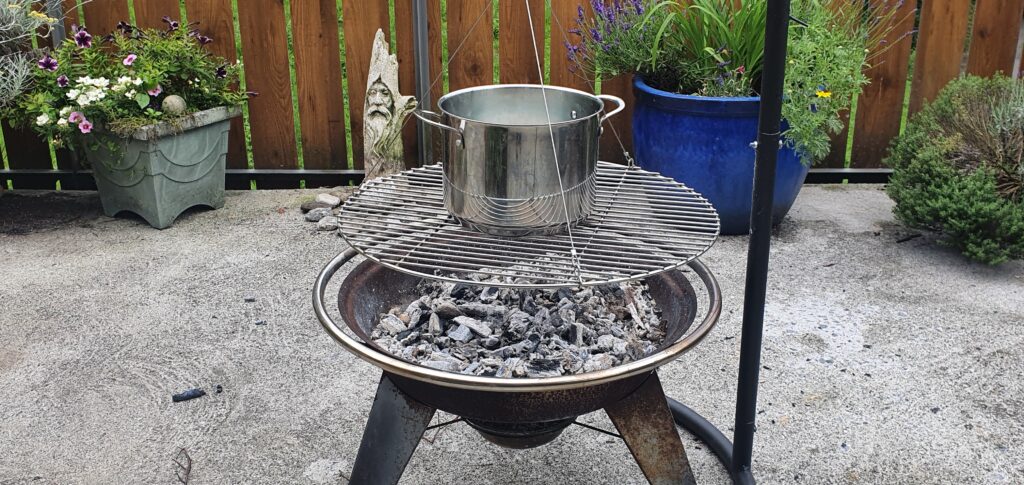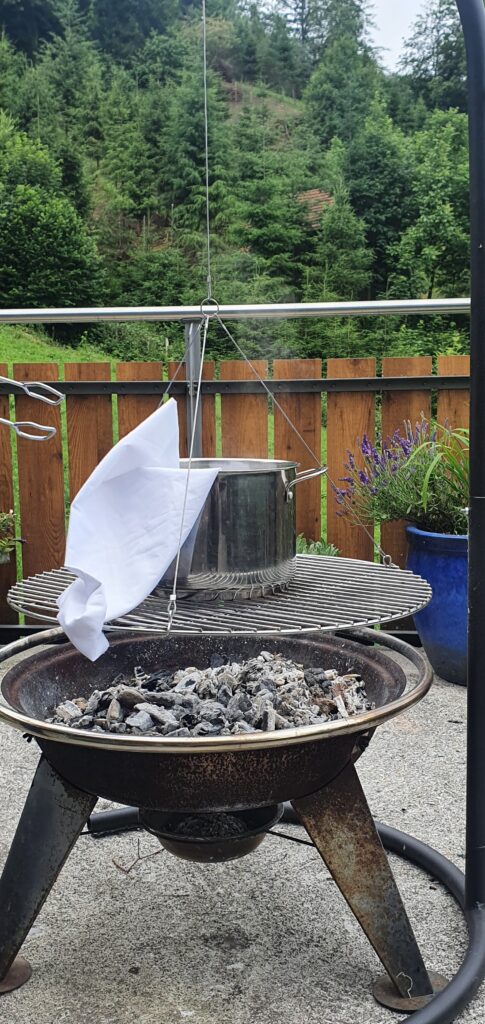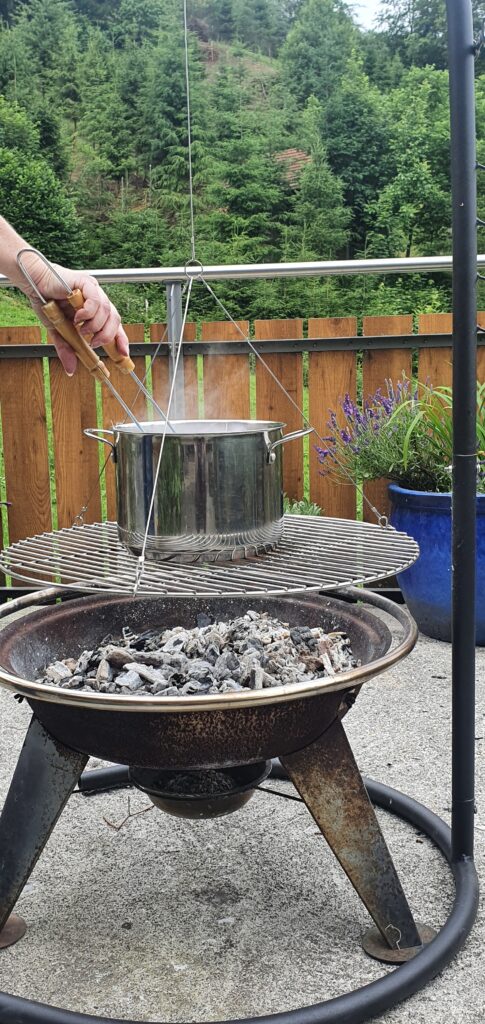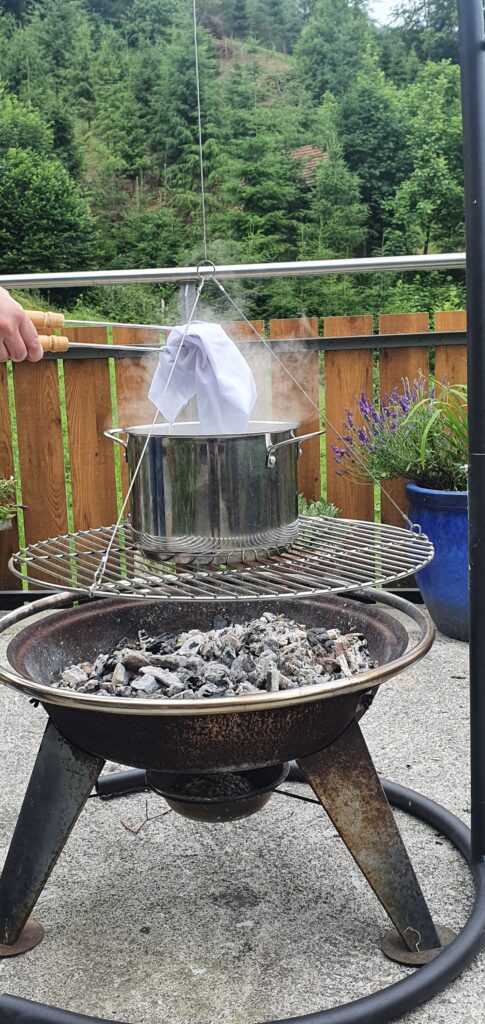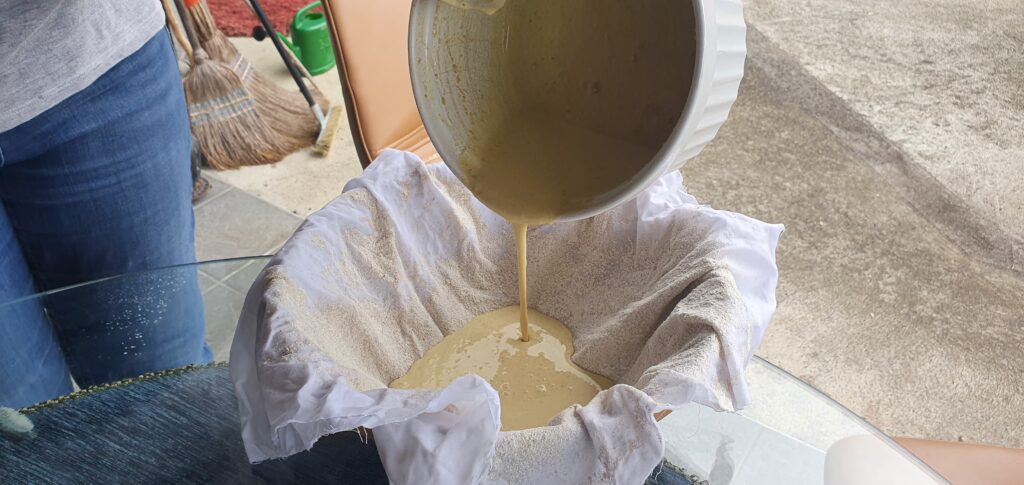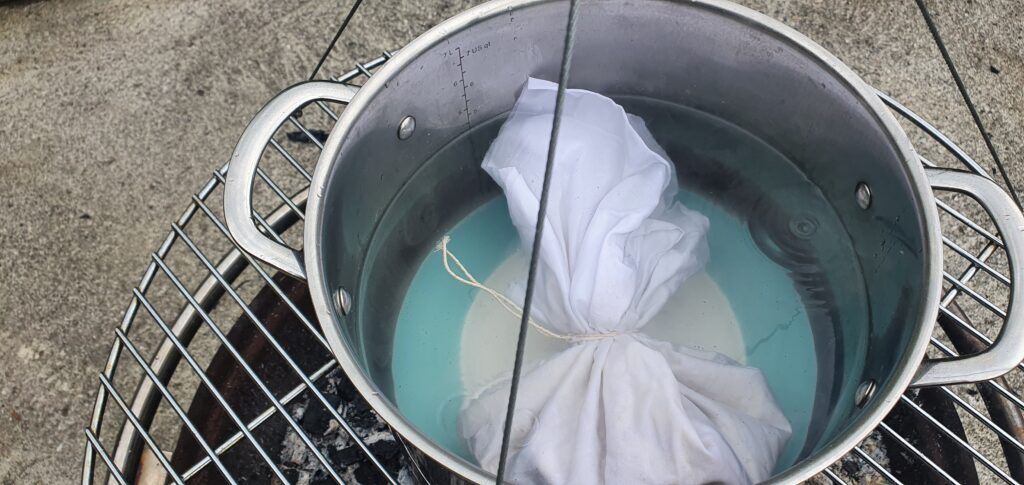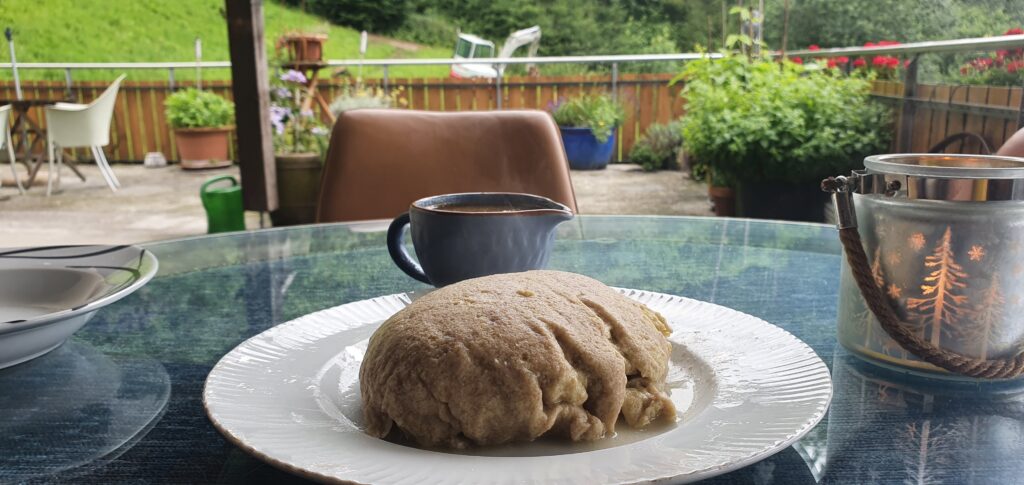‘They bake them in the oven, they boil them with the meat, they make them fifty several ways:
BLESSED BE HE THAT INVENTED PUDDING.’
François Maximilien Misson, French writer and traveller, c. 1650 – 1722
In my last blog post (Molly Hogtrough Cooks) I said I was going to tackle a plain boiled pudding and follow the instructions from ‘Food and Cooking in 18th Century Britain, History and Recipes’ by Jennifer Stead (English Heritage, 1985).
The first hurdle was finding a pudding cloth. I am thankful that advances in common sense throughout the 1700s removed the necessity to boil puddings in the ‘clean guts of newly slaughtered animals’ and that Molly Hogtrough would have reached for a cloth instead.
I thought I’d found one at the amazing online cook shop, Andara, but when it arrived there were two problems. I had not checked the measurements or the description (clearly, I have an excuse – it was in German). First problem, being rectangular rather than square, it was a little too small. Second problem, even though the description said, ‘pure cotton’ the washing instructions were ‘wash at 95oC’. Oh dear! Not much good for boiling a pudding, then. It was really for straining things, like cheese, but it will come in useful for making other 18th century things later, so all was not lost. The 5oC reduction in temperature from a boil wash for natural cotton may have been due to synthetic stitching around the edge. I considered cutting it off, but because it was already on the small side, I had to think again.
I rooted around in my cellar for an old Egyptian white muslin curtain which I knew was there somewhere. I was sure it would do. Easy, just snip a piece off the bottom. However, when I eventually found it, the fabric was stretchy. Clearly not natural cotton. And it smelled rather musty.
I needed an 18” (45.5 cm) square piece of doubled-up muslin, so I ordered a metre from my favourite fabric supplier – Cotton Color. When it arrived, it was perfect. No stretching, no stitching, just pure natural cotton, and a bargain, because now I had not one, but two pudding cloths.
Now the fun could begin.
Molly Hogtrough had no option but to cook over an open fire, so not having a chimney in our home (or at least, not an open hearth like Molly’s) I dragged our old brazier into the middle of the terrace.
We would do it the hard way.
I had help – my daughter Beth was on hand for support. And wine pouring. The brazier was full of bits and pieces of dried plants and wood, but no problem, I would just light it and throw on some charcoal.
Beth didn’t think this would work. I should clean out the brazier first, she said.
Nah, let’s just do it, I replied, confidently. I really should have listened to her.
Now, where’s the lighter?
Lighter?! They didn’t have such treasures in 1780, Beth reminded me. We need a tinderbox, she said.
Back down to the cellar I went. I’m sure we used to have one, but the cellar is vast and stuffed full, and if it was there, it did not reveal itself. I did find a bottle of Toilet Duck, quacking at the back of a shelf, so it was not a wasted trip – I could strike one item off my shopping list, even though I added a tinderbox in its place.
In the absence of flint and steel, we set about trying to light the fire with sticks. Actually, with a piece of wood, some straw stuff, and an old arrow which belonged to my dad when he was playing at Robin Hood, c. 1948. After an unproductive half-hour, and not having many bushcraft skills, I checked You Tube for some Ray Mears wisdom. He told us we were doing it all wrong, of course.
Within seconds the lighter had rectified our failure, and the brazier was now burning brightly. And then, ten minutes later, it had all but burned itself out. We added half a bag of charcoal, rooted around the terrace and found enough bits and pieces of wood to keep it going a little longer.
Yes! Success – finally it was hot, glowing, and ready for our pot of water.
I needed a large pot, into which was dropped an old plate, according to the recipe instructions. It had to be filled with enough water to cover the pudding.
Here come failures number two, three and four in quick succession. Firstly, for some unknown reason, I thought it would be great to use our hanging grill to suspend the pot above the fire. Erm. No. We lowered the grill down as far as it would go but it just wasn’t nearly close enough to the heat and the water hadn’t even reached lukewarm before we had to add another half a bag of charcoal. Secondly, I didn’t put a lid on the pot, so every time we fanned the fire to try and stop it going out, ash flew into the water. So, since the water was not all that hot, I decided to change it and use three kettles full of boiling water instead. (Yes, more cheating.) Third failure: trying to get the pot off the grill was extremely dangerous! If it had been boiling, an accident would have become a tragedy. I have no idea why I didn’t just go back to the cellar and grab the grill which fits onto the top of that brazier. No idea.
Now the water was beginning to simmer. Not boil exactly, but tiny bubbles were coming up from around the plate.
Time to make the pudding!
Recipe:
2 oz (50 g) plain flour
¼ tsp (1.5 ml) salt
3 eggs
8fl oz (225 ml) milk or single cream (I chose cream. Well, why not?)
As Molly Hogtrough was illiterate, all her recipes would have been learned by heart, handed down from mother to daughter, generation after generation. I doubt very much whether she had a set of scales, and definitely wouldn’t have had a Pyrex jug with handy fl oz marks on it. She would have measured out ingredients by sight alone. A couple of spoons here, a slug there, and a pinch for luck. It would have to do.
Not taking any chances, I weighed and measured.
The recipe calls for plain flour. White flour was available for those who could afford it back then, but most people only had access to something far less refined. Wheat flour began to surpass rye and barley at the beginning of the 18th century, but it wasn’t until the end of the 19th century when roller mills, which are still used today, became commonplace. Until then, mills ground wheat between stones, and these could not refine the grain enough to remove all the exterior of the wheat kernel. They could extract some of the fibre, but much of the germ and embryo was left. This actually meant more nutrients and important oils remained, so the colour was more grey or yellow than white, but the downside to all the additional nutritious goodness was that it went rancid quickly.
I used rye flour rather than white, as it is a little coarser and perhaps closer to what Molly Hogtrough could afford. That is only a guess, though.
The first job was to dip the pudding cloth in the boiling (ha ha!) water and leave it to drain. Easy enough. Except the water was still not boiling and I dropped the cloth. Luckily, it didn’t fall into the fire.
Next, the recipe calls for the flour and salt to be sifted into a bowl. The eggs had to be beaten in another bowl, to which we added the flour, salt, and cream. This is basically a pancake batter, but rather heavy on eggs and light on flour.
I followed the recipe instructions, but really, it was all backwards! Everyone knows that you make a well in the centre of the flour, add the eggs and cream slowly, beating as you go for a smooth batter. Don’t they? That’s not the way this 18th century cook explained things.
Not surprisingly, we ended up with a lumpy mix. Never mind, maybe they liked lumps in their puddings. Perhaps it added to the texture, who knows?
Next, we took the wet pudding cloth, laid it out, and sprinkled flour over the surface. After shaking off the excess we laid it over a bowl and poured in our lumpy pudding mix.
We gathered the corners and tied it up with some string, leaving space for the pudding to expand. And then we put it into the water, still not boiling, and covered the pot.
And then … it started raining. Heavily.
Enough was enough. The fire was now being drenched with summer rain, the grill was not close enough to the heat, and the water not even boiling. Time to give up and go indoors, use our modern electric hob, and finish the job. Within seconds the pan was boiling, and the pudding being transformed from lumpy mush to delicious dessert.
What I was most looking forward to was the wine sauce.
Recipe:
8fl oz (225 ml) wine
2 oz (50 g) butter
1 ¼ oz (30 g) caster sugar
The simple instructions were to put everything in a pan and heat it up. So easy. I used brown sugar because it has more flavour, although Molly Hogtrough would have had white sugar (if she could afford it) in the form of a sugar loaf, and taken bits off it with sugar nips, very much like a pair of pliers.
The pudding needed to boil for 30 minutes. At last it was cooked. Or so we thought. The instructions said to dip the pudding in cold water to loosen the mixture from the cloth. Once again, I dropped the thing and cold water splashed all over the place. At least it wasn’t in the boiling water. (I am a dangerous cook.) However, when we cut off the string and unwrapped it, it was just a soggy mess. I re-tied it and returned it to the heat for ten more minutes.
The second time I hauled it out of the boiling pot, I was more careful, and after a cold dip, I untied the cloth and opened it out. It looked much better – cooked, in fact. I put a plate over the top as instructed, turned it over and peeled off the cloth.
The moment of truth!
It looked like a lump of … well, plain pudding. So at least it did was it was meant to do.
The verdict:
It had the texture of baked custard and tasted similar, too. As that happens to be one of my favourite puddings, I was pleasantly surprised.
The wine sauce was unbelievably delicious! So simple and yet really delightful.
Both Beth and I thought it reminded us of something, but we couldn’t place it. Caramel sauce with a twist? We came to the conclusion that somewhere in our DNA is the memory of plain pudding with wine sauce that our ancestors surely must have eaten when they were alive way back then.
The whole thing had a feel of a stodgy crème caramel, but was really rather good.
It took three hours in total, from trying to light a fire to sitting down to eat. If the year had been 1780, we would probably have starved, not being able to even get the fire alight. Even with the fire lit, there was failure after 18th century failure. I estimate what we made would provide six servings at most. And that’s just dessert.
Once again, I am in awe of and grateful for all our mod cons, without which our ancestors were truly heroes. To produce copious numbers of offspring (the real Molly Hogtrough had twelve children) and to keep them well fed and alive long enough that they could go on to become adults, and eventually – well, here we all are.
Heroes, the lot of them.
